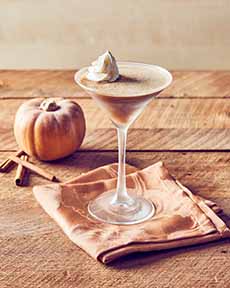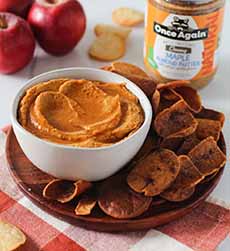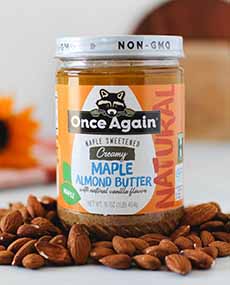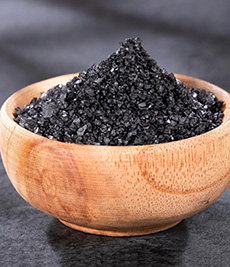|
This potato-pumpkin side dish is easy to make because it uses instant potatoes: There’s no peeling or slicing. Thanks to the Idaho Potato Commission for the recipe.
You can plop these tasty patties atop a salad or serve them as a side with a main course.
> The history of pumpkins.
> The history of potatoes.
> The different types of potatoes: a glossary.
WHAT ARE PEPITAS
Since this recipe contains pepitas, it’s a Food 101 learning moment.
The word pepita is often used interchangeably for pumpkin seed, but there is a significant difference.
A pepita is the edible seed of a specific variety of pumpkin, the Styrian pumpkin. This is also the seed used to make pumpkin oil.
Pepitas are dark green and have no hulls.
Pumpkin seeds, on the other hand, refer to the larger, white seeds with hulls found inside the jack o’lantern pumpkins for Halloween.
The variety, bred to be uniformly tall and wide, is known as Howden Field pumpkin.
RECIPE: MASHED POTATO, PUMPKIN & PEPITA PATTIES
Ingredients For 8 Patties
3 cups instant Idaho® potato flakes, divided
1½ cups skim milk
1 cup canned pumpkin
4 eggs, divided
¾ cup shelled, unsalted, roasted pepitas
1 teaspoon salt-free Cajun or Creole seasoning*
½ teaspoon salt
1 teaspoon ground white pepper
Optional for serving: whole-berry cranberry sauce, sour cream, or Greek yogurt
Preparation
1. WHISK 2 cups of the potato flakes in a medium bowl, with the milk, pumpkin, 2 eggs, the pepitas, and the seasonings. Mix until well blended; set aside.
2. WHISK the remaining 2 eggs in a small bowl. Place the remaining 1 cup of potato flakes into a pie plate.
3. HEAT a 10″ skillet over medium-high heat. Lightly spray with cooking spray.
4. SCOOP the reserved potato pumpkin batter with a ¼ cup measuring cup into your clean hands and form into 2½˝ wide patties.
5. DIP each patty into the beaten eggs, then into the potato flakes, coating both sides. Repeat until you have enough to fill the skillet.
6. FRY the patties in the hot skillet, cooking until golden brown on each side. Coat the skillet with more cooking spray if the patties begin to stick.
7. TRANSFER the cooked patties to a platter. Continue to form and fry patties until all the batter is used. Serve the patties warm or at room temperature.
__________________
*If you don’t have either Cajun or Creole seasoning, you can approximate by blending 6 tablespoons paprika, 4 tablespoons garlic powder, 2 tablespoons black pepper, 2 tablespoons cayenne (add more for more heat), 2 tablespoons dried basil, 2 tablespoons dried oregano, 2 tablespoons dried thyme, 2 tablespoons onion powder, and 2 tablespoons white pepper. Store the remainder in a tightly-capped jar.
†Pepitas can also come from a related cultivar.
|
|
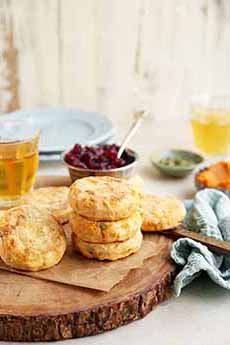
[1] (photos #1, #2, and #3 by Jonathan Melendez © Idaho Potato Commission).
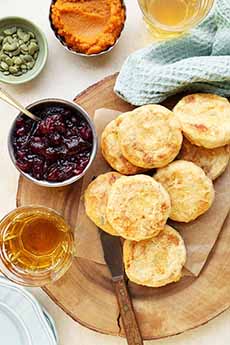
[2] The recipe suggests a side of cranberry sauce. We added Greek yogurt, too.
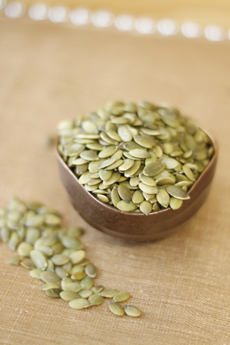
[3] Pepitas, unlike pumpkin seeds, have no hull (photo © The Nibble).
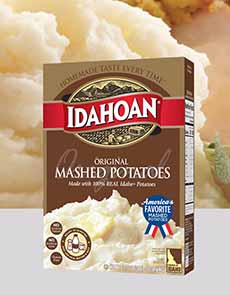
[4] Mashed potato flakes, a.k.a. instant mashed potatoes (photo © Idahoan Foods).
|
